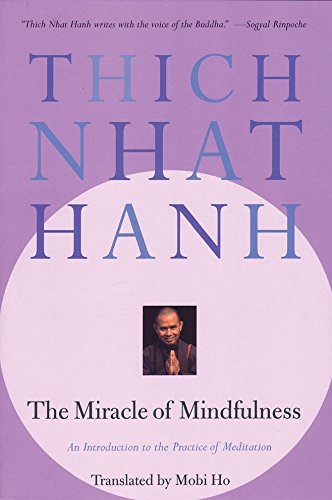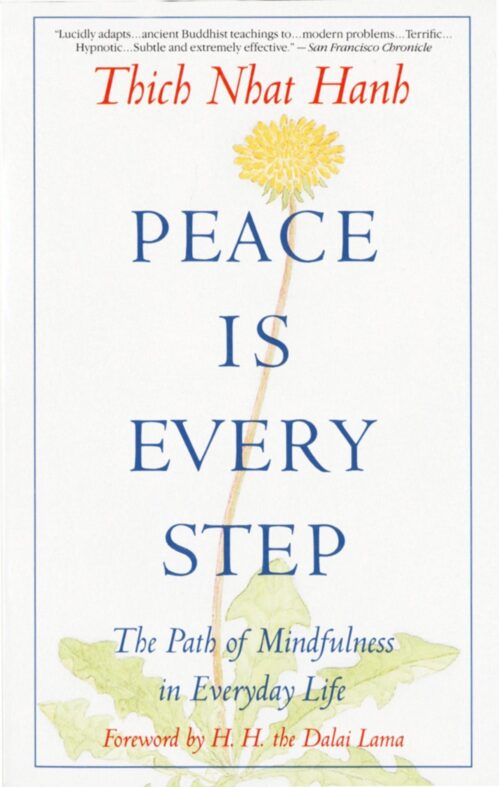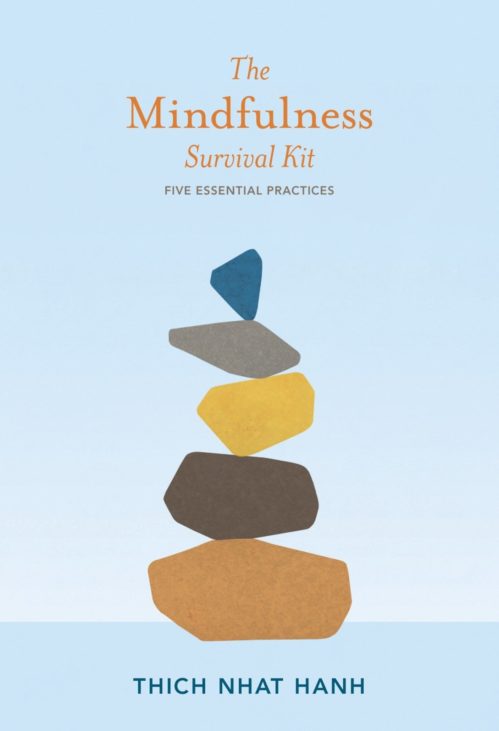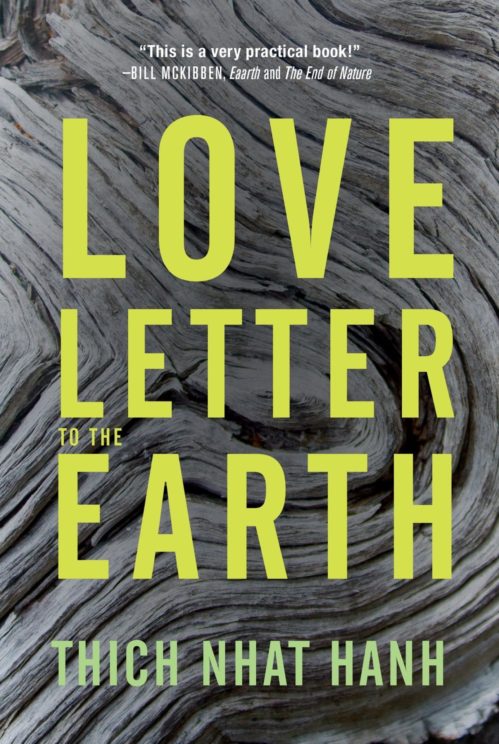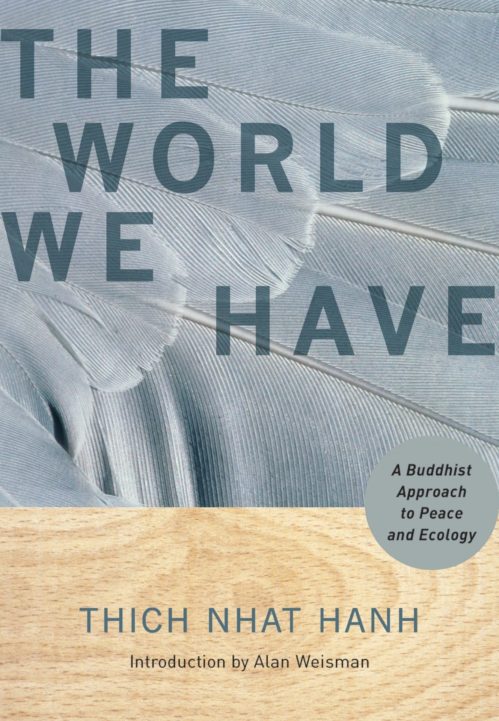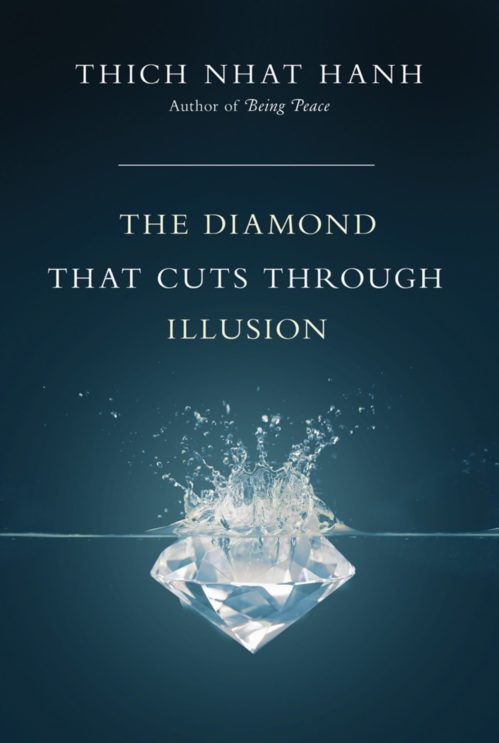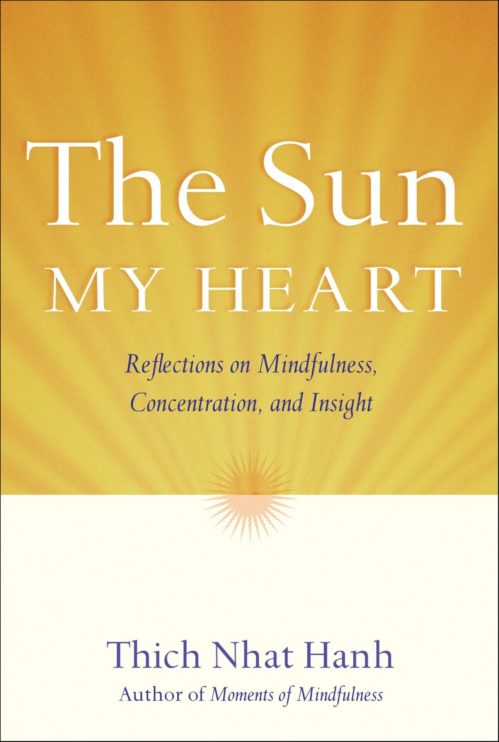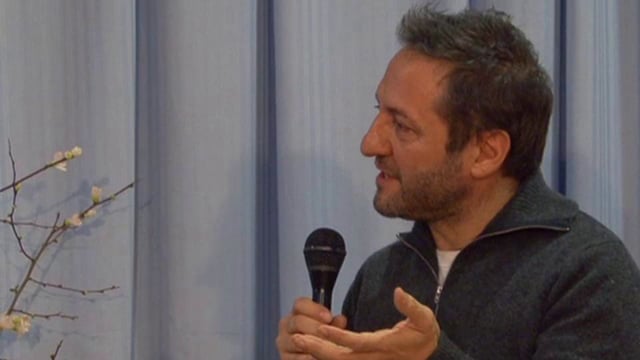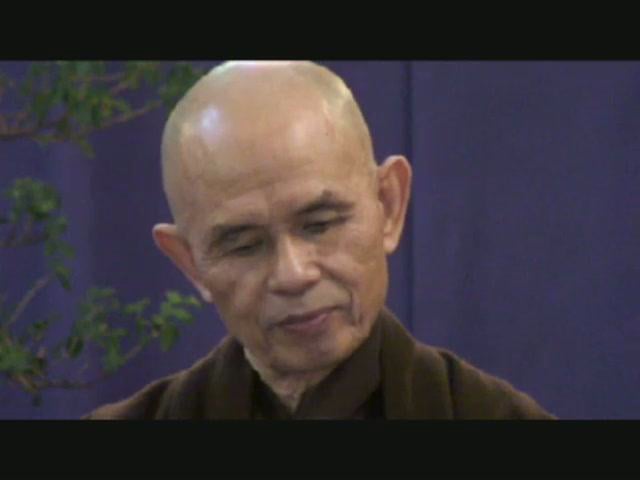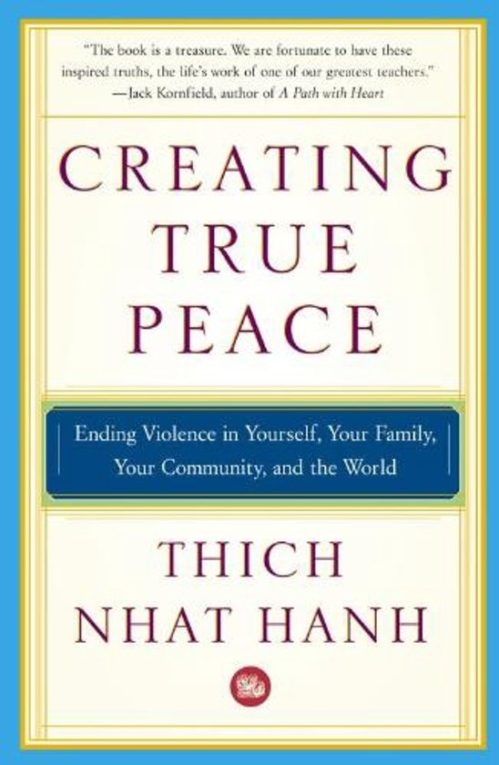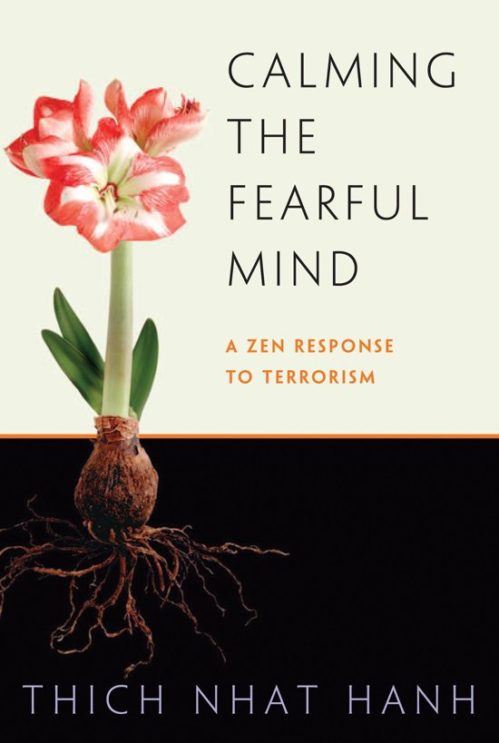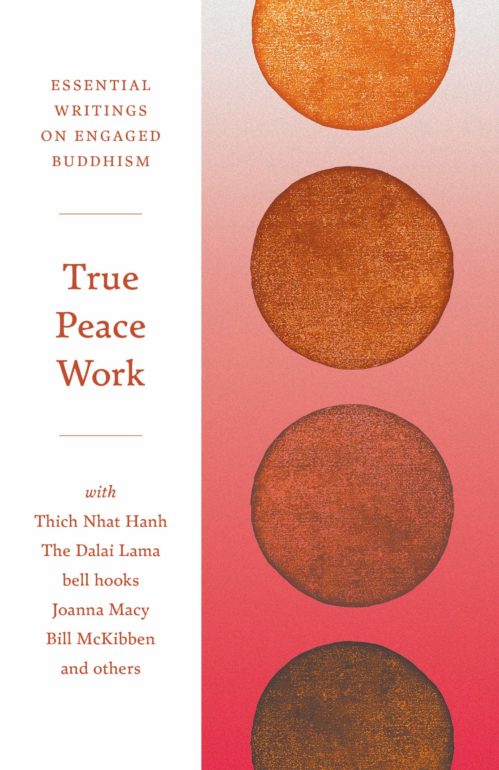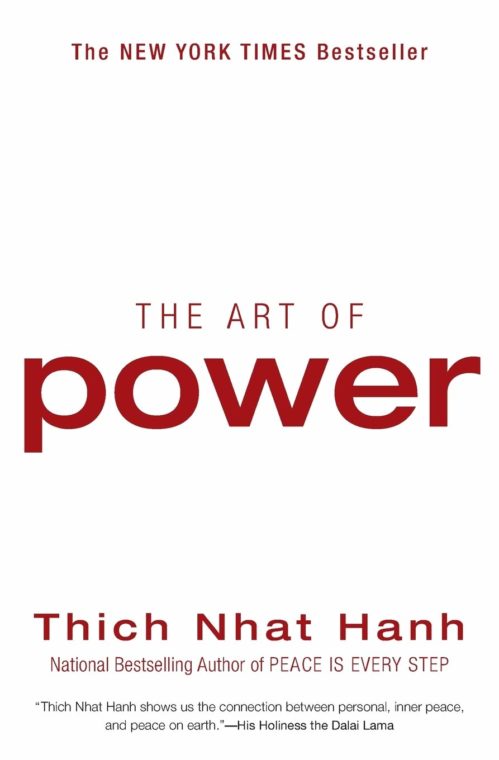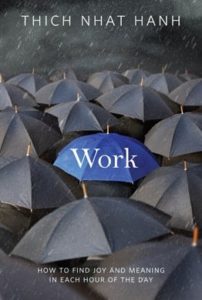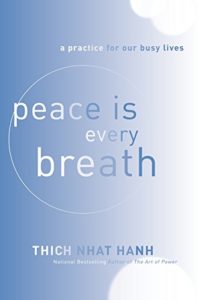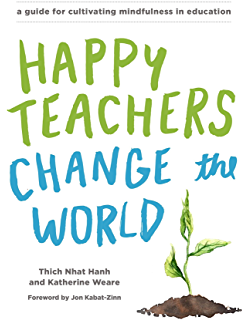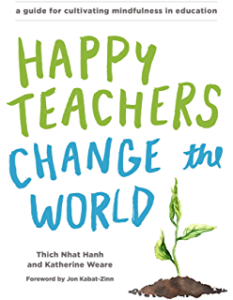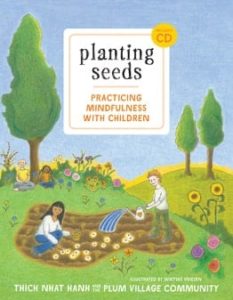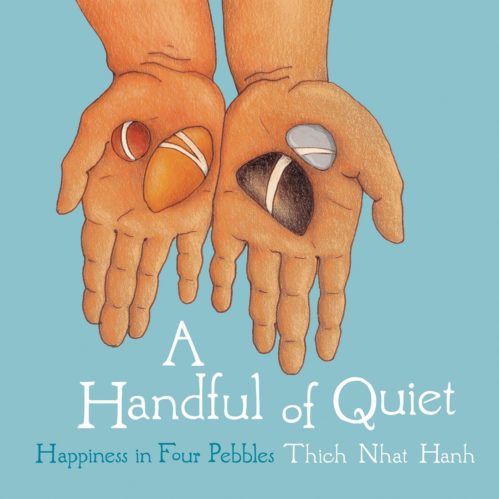Thich Nhat Hanh’s pioneering teachings on mindfulness, “interbeing” and engaged ethics have opened new ways forward for meditators, peace-makers, activists, educators, business people and politicians around the world.
Melompat ke Mindfulness, Ecology, Peace, Business, Education
Mindfulness
Thich Nhat Hanh began teaching mindfulness in the West in the early 1970s. His 1975 book The Miracle of Mindfulness presented new practices he had developed to inspire his students and social workers back in Vietnam, to help prevent them burning out in the turmoil and challenges of war.
Mindfulness allows you to live deeply every moment that is given you to live.
Thich Nhat Hanh
I don’t think that I would have had the inner stamina, the depth of optimism, the depth of commitment, the depth of the inspiration if I had not been accompanied by the teachings of Thich Nhat Hanh.
Christiana Figueres, UNFCCC Chair of the Paris Climate Agreement
Thich Nhat Hanh found new ways to teach the art of mindful breathing and mindful walking as the foundation of meditation. He created simple practices like mindful teeth-brushing, mindful dishwashing and “tangerine meditation”. He developed a new style of walking meditation, and ways to combine deep listening with mindfulness of compassion to open up communication. He initiated a gentle way of guiding groups in meditation, so that even beginners could use breathing meditation as a way to look deeply, face challenges and heal, rather than escape the present moment.
Breathing mindfully helps us handle strong emotions, like anger, fear, anxiety and despair, and it helps us generate moments of happiness in daily life. For Thich Nhat Hanh, mindfulness is an energy to be cultivated all day long, to sustain compassionate action so we can help relieve suffering in ourselves and the world.
A Path not a Tool
Thich Nhat Hanh always teaches mindfulness within the context of ethics. With the energy of mindfulness comes mindful consumption, mindful relationships, and ethical livelihood. You cannot separate mindfulness from mindful speaking, acting, working, and engaging in the world.
Mindfulness is not a tool or instrument to get something else—whether that something is healing, success, wealth or winning. True mindfulness is a path, an ethical way of living, and every step along that path can already bring happiness, freedom and wellbeing, to ourselves and others. Happiness and wellbeing are not an individual matter. We inter-are with all people and all species.
Essential Reading
Melompat ke Mindfulness, Ecology, Peace, Business, Education
Ecology
Thich Nhat Hanh’s teachings on “interbeing” (a term he coined in the 1980’s) have led the way in Buddhist deep ecology. Referencing ancient Buddhist texts, such as the Diamond Sutra, he explains Buddhist teaching of “no-self” in the light of ecology: “we cannot separate human beings from the environment. The environment is in human beings and human beings are part of the environment… [Even] the distinction between living beings and non-living beings disappears after meditation.”
He advocates a human-based solution to solving climate crisis. “We need more than just new technology to protect the planet,” says Thich Nhat Hanh. “We need real community and co-operation. We need to re-establish true communication—true communion—with ourselves, with the Earth, and with one another.” Only when we can touch real love for the Earth, he says, will we have the immense energy we need to make the radical changes necessary to save our civilisation.
There’s a revolution that needs to happen and it starts from inside each one of us. We need to wake up and fall in love with Earth. Our personal and collective happiness and survival depends on it.
Thich Nhat Hanh
“This kind of enlightenment is crucial to a collective awakening. In Buddhism we talk of meditation as an act of awakening, to be awake to the fact that the earth is in danger and living species are in danger.”
Collective Action
In 2007 he led tens of thousands of his followers in shifting to a vegan diet. “In the past Buddhists were vegetarian with the intention to nourish our compassion towards animals. Now we know we should be vegan in order to protect the Earth.”
Taking Refuge in Mother Earth 18:22
Allow yourself to be embraced by the Earth in this deep teaching from Thich Nhat Hanh.
Science, Mother Earth and Einstein’s Cosmic Religion 26:40
Thich Nhat Hanh’s vision for a science-inspired cosmic religion.
“In Buddhism we speak of collective action,” he says. “Sometimes something wrong is going on in the world and we think it is the other people who are doing it and we are not doing it. But you are part of the wrongdoing by the way you live your life.”
“That is why to learn to change our way of daily life, so that there is more mindfulness, more peace, more love is a very urgent thing. And we can do that beginning now, today.”
“Activists have to have a spiritual practice in order to help them to suffer less, to nourish happiness and to handle suffering, so they will be effective in helping the world. With anger and frustration you cannot do much.”
Essential Reading
Watch Thich Nhat Hanh’s Ecology Teachings
Related News Coverage
- “Only Love Can Save Us from Climate Change”
- A Sense of Sacred Can Help Sustainable Business
- Why we Need Mindfulness and a Spiritual Revolution to Protect the Earth
- What We Can Learn From Buddhist Insights for the Climate Crisis
- This Buddhist Monk Is An Unsung Hero In The World’s Climate Fight
- Thich Nhat Hanh on Facing Despair and Ecological Collapse
Melompat ke Mindfulness, Ecology, Peace, Business, Education
Peace
Thich Nhat Hanh’s key message is that if we are to have peace in the world, we need to have peace in ourselves. Through decades of peace activism, he realised that the roots of war lie not in weapons, but in our own hearts and minds —in the energy of fear, violence, and discrimination triggered by what we watch, read, hear and say.
By the way we live our daily life we contribute to peace or to war. It is mindfulness that can tell me that I am going in the direction of war and it is the energy of mindfulness that can help me to make a turn and to go in the direction of peace.
Thich Nhat Hanh
Thich Nhat Hanh teaches that it is only by cultivating peace in our own body and mind, releasing tension, calming strong emotions, re-evaluating our perceptions, and making peace with our family members and colleagues, that we will be able to create peace in our society, our nation and in the world.
Lotus in a Sea of Fire
Since his time as a leading figure in the Buddhist Peace movement in 1960s Vietnam, Thich Nhat Hanh has insisted there is no such thing as “a war for peace”: peace begins with stopping the bombing. He emphasises the importance of not taking sides in a conflict. He teaches that “The real enemy of man is not man. The real enemy is our ignorance, discrimination, fear, craving, and violence.”
Peace is not simply the absence of violence; it is the cultivation of understanding, insight and compassion, combined with action.
Thich Nhat Hanh
In 1966 he left Vietnam for the US to call for peace, and paid the price of exile. He helped persuade Dr. Martin Luther King, Jr, to come out against the War, shifting the tide of public opinion. In January 1967 Dr. King publicly nominated him for the Nobel Peace Prize, calling him “an apostle of peace and non-violence” whose “ideas for peace, if applied, would build a monument to ecumenism, to world brotherhood, to humanity.” Exiled from his homeland, Thich Nhat Hanh went on to lead the Vietnamese Buddhist Peace Delegation at the Paris Peace Talks.
Thich Nhat Hanh shows us the connection between personal, inner peace, and peace on earth.
His Holiness the Dalai Lama
If you want peace, you have to be peace
In the 1980’s, Thich Nhat Hanh saw there was “a lot of anger in the peace movement.” He said, “You can put all the bombs on the moon, but if you do not uproot the bombs in people’s hearts, war will continue.” In Plum Village, France he began developing concrete mindfulness practices to cultivate peace, compassion, deep listening and loving speech; and to resolve conflict and transform fear, anxiety and wrong perceptions.
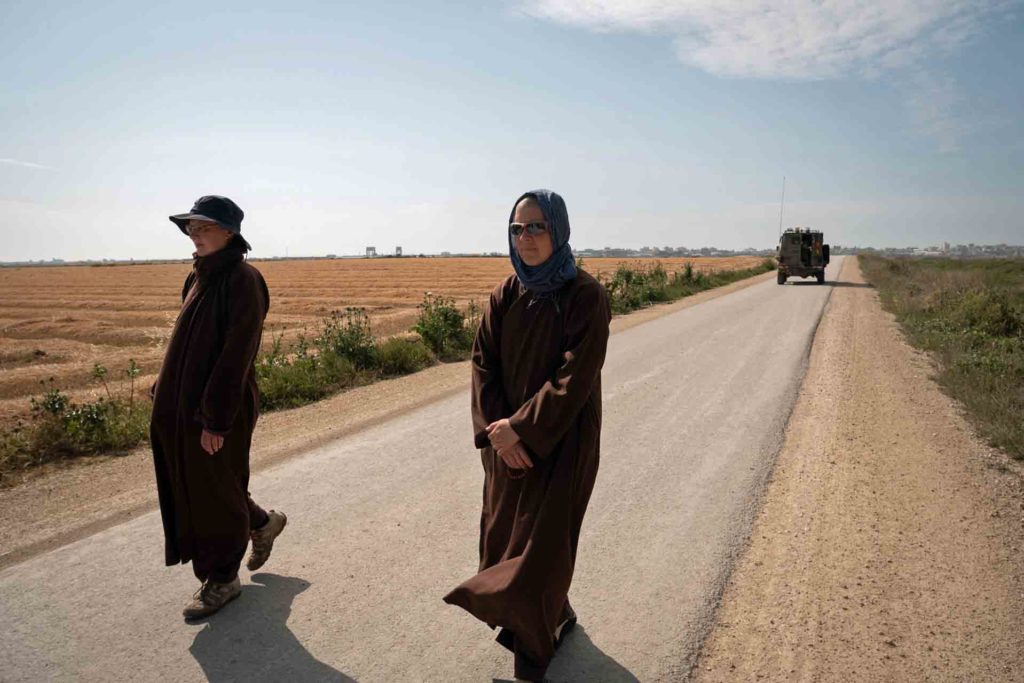
Peace is possible
Thich Nhat Hanh has taught that compassion is the best way to guarantee true security. He has offered retreats for war veterans, Israelis and Palestinians, and police officers, and addressed the roots of fear, terrorism and the military-industrial complex. He brought his message of peace to US Congress during the bombing of Iraq, and to parliaments in India, the UK, and Northern Ireland. He has led peace walks for gatherings of thousands in Paris, Los Angeles, Rome, Hanoi, Macau and New Delhi. In these walks, he says, “Each step is a realisation of peace. Each step is a prayer for peace.”
When asked recently how we can have peace in the face of climate crisis and the collapse of civilisation, he replied: “It is possible for us to do something now. Don’t despair. There is something we can all do. There is still a chance. Recognise that, and do it, and you will find peace.”
Recommended Books on Peace and Non-Violence
Watch Thich Nhat Hanh’s talks and teachings on Peace
Melompat ke Mindfulness, Ecology, Peace, Business, Education
Business
Time is not money. Time is life. Time is love.
Thich Nhat Hanh
At his retreats for businesspeople, and his talks at Corporate headquarters, Thich Nhat Hanh has emphasized the need to learn the art of living happily in the present moment, and not sacrificing what we have now to attain something else in the future. “You can be a victim of your success,” he says, “but you can never be a victim of your happiness.”
We may have the impression we are irreplaceable, he says, and we may sacrifice everything to invest in our career and company, including time with our loved ones, or time relaxing in nature, and time doing what nourishes us most. But if we died in an accident tomorrow, the chances are our company would be able to replace us within 3 days.
You have to choose. Do you want to be No.1? Or do you want to be happy?
Thich Nhat Hanh
Thich Nhat Hanh teaches that we need to evaluate our ideas of what “true” happiness is. There are many people who spend their lives chasing after fame, power, wealth, and sensual pleasures, thinking they can be happy only when they get these things. But when they do, they find they’re still not happy. Happiness can only be found in the present moment, when we can live the present moment deeply, in touch with ourselves, our loved ones, and the Earth.
Once we can touch true happiness, we will have the insight, time, and energy we need to take action to relieve suffering, inequality and injustice.
What do you really want to do with your life? 5:19
How corporate leaders can cultivate powerful intention and motivation.
Thich Nhat Hanh has encouraged business leaders to cultivate qualities of clarity, compassion and courage in their leadership, and to transform their companies into real communities. He invites leaders to create opportunities to listen deeply to employees, to hear both their suffering and aspirations– a very concrete way to apply ethics in business and release energy needed for corporate transformation. It is possible, he says, to transform companies into organisations that increase well-being and reduce suffering for employees, their families, society and the Earth.
Related News Coverage
- Thich Nhat Hanh: is mindfulness being corrupted by business and finance?
- A Buddhist monk at Salesforce’s tech conference showed me a great way to reduce stress
- How Monks Convinced Marc Benioff To Install ‘Mindfulness Zones’ Throughout Salesforce’s New Offices
- A Zen master explains how the west is getting mindfulness all wrong
Melompat ke Mindfulness, Ecology, Peace, Business, Education
Mindfulness in Education
Children and families have been welcomed at the annual Summer Opening retreat at Plum Village in France and other retreats around the world for many years and since 2008 Thich Nhat Hanh has been emphasising the need to support educators by sharing mindfulness practice.
Schools can teach much more than reading, writing, math, and science. School programs can also teach young people how to deal with anger, how to reconcile conflicts, how to breathe, smile, and transform. There can be a revolution in education.
Thich Nhat Hanh
It starts with teachers
Thich Nhat Hanh has emphasised that mindfulness in education must start with teachers. If a teacher practices mindfulness and embodies it in the classroom, they will transmit mindfulness to their students whether or not they formally teach it to them. As such monks and nuns from Plum Village monasteries lead retreats for teachers around the world and created the Wake Up Schools movement.
So for a school teacher the first thing to do is to come home to himself or herself. The way out is in. Go back to oneself and take care of oneself. Learning how to generate a feeling of joy, learning how to generate a feeling of happiness, learning how to handle a painful feeling, a painful emotion.
Thich Nhat Hanh
The classroom as a second family
It is a sad fact that for many children, their family does not provide a happy and emotionally healthy environment. Thich Nhat Hanh has taught that for these children, the classroom offers a second chance for a supportive family. If schools and teachers are able to provide enough time for compassionate communication within the classroom, they can create a safe and healing environment for young people.
In a new system of education there should be time for teachers to sit down with the students to listen to each other. Because both students and teachers have suffering in them. And if teachers and students understand each other’s suffering, they will stop making each other suffer more. There will be good communication and work of teaching and learning will become much easier.
Thich Nhat Hanh


